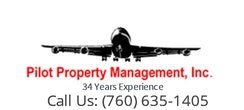All too often we see irrigations water streaming down the gutters in the streets. All to often it is one of our neighbors. The state is in a multi year drought and the Colorado River, one of southern California’s main sources of water is in a nine year drought. Major reservoirs are at historic lows despite the recent rainfall earlier in 2010. The fact is most of our summers are dry, unlike say Hawaii where it rain in the afternoons. It is estimated that southern Californians use 56% of their water on landscaping. Overwatering is the number 1 problem for associations. Green lawns make everyone happy until those responsible for paying for the water compare their costs to a neighbor’s.
Association Management: Maintenance
How to Prune Trees
People who carve meat are called butchers. Sometimes people who cut trees earn the same name. There is an art to trimming trees and while an arborist is an extremely knowledgeable and valuable resource not every tree needs an arborist. Arborists are probably best used in the planning, development and maintenance of an expanse of trees.
No branch should be removed without a reason. Trees produce a crown in order to create the sugar they need for growth. Excessive trimming will cause a slower growth and even weaken the tree. That said sometimes trees need to be pruned for safety reasons such as power lines or building being too close. Sometimes they need to be pruned to let air and light penetrate. Dead or diseased limbs should be cut anytime but the sooner the better, and definitely before the spring growth. The best time is as far away from the spring growth as possible. That growth takes all the energy the tree has and it is at its most susceptible to damage just after a growth period. Crowning, taking off the top of a tree can be performed in a number of ways. They can be cleaned thinned raised or reduced. Cleaning involves removing dead or crowded branches, or branches that seem to be slow growing, while thinning is to allow air and light to penetrate all the way to the ground so requires selective cutting to open up the foliage allowing for fuller foliage in the future.
. Raising the crown calls for removing lower branches, while reduction is the opposite effectively lowering the top of the tree while still allowing it to grow sideways.
1584
Brush abatement techniques
San Diego has experienced two major fire conflagrations in 2003 and 2007. As a result fire departments are even keener on removing combustible material from unoccupied land and even in some cases from occupied lots. Homeowner associations are susceptible to fire as much as anyone and it behooves associations to have a brush abatement plan in place. For many years some properties have been untended resulting in huge overgrown areas filled with highly combustible material that has accumulated over time. All dead plant material should be removed and combustible plant material should be thinned and shaped trimmed and cleared every year. After the first major clearing the annual trimming and clearing is much less expensive. The labor associated with brush removal can be exhaustively expensive as the plant material must either be dragged uphill for ultimate removal or downhill. Lack of access can increase the cost dramatically. Steep hillsides are very difficult to tame by hand. We recently employed a herd of goats and a few goat herders to clear an area that had not been tended for many a year. The initial feeding reduced the amount carried away enormously.
1171
Dry wood Termites and how to get rid of them.
Unfortunately termites have very small eyes and so cannot read posted signs saying termites are not welcome here. Sadly they have been known to return occasionally very soon after a building has been treated. Wood can be treated before construction and certain lumber is specially treated ……………… But eaves and rafters, fascia boards and starter boards are usually made of soft wood which is particularly appealing to termites. Termites are above ground cave dwellers by which I mean they live above ground inside caves made of wood that they bore out like warrens. Subterranean termites are different and the subject of a different article. Many companies promote their new and improved method of getting rid of termites. There are essentially six different ways. Spot treatment where the wood is accessible and is injected with a fungicide that kills the termites in that local area; Very effective and inexpensive on say eaves or fascia board.
